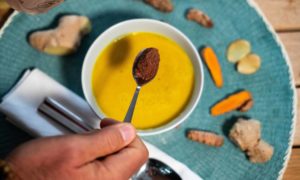Estimated reading time: 3 minute(s)
Collagen is much more than just what we hear about in beauty commercials or adverts for spa treatments. It’s a fundamental protein for our bodies, in fact, it’s the most abundant one we have and is the reason why we have healthy skin, bones, and tendons. The most important thing to keep in mind when it comes to collagen is that its presence in our body decreases over time. It’s estimated that at a relatively young age (around thirty) we stop producing collagen naturally all together and/or that the quality of the protein is greatly reduced
How to detect a lack of Collagen
So what are the negative side effects of Collagen loss? Well, there are several; some of which are more visible and others that are more pronounced as we age. If we lack collagen either because we have naturally stopped producing it over time or because we have some other deficiency we can begin to notice more breakage in our hair and weaker nails. A deficiency in Collagen is also easily noticed with the appearance of our skin, skin loses elasticity and firmness and just generally looks aged resulting in wrinkles and more flabby skin.
Other causes are less easy to see and are perhaps less easy to recognize as they can have many causes, however, things such as joint pain and reduced mobility are usually signs of a lack of collagen. Thinking in the long term, this protein helps to delay the loss of bone mass and reduces the appearance of varicose veins. Therefore, a lack of Collagen is directly related to such illnesses such as rheumatism, arthritis, and other bone and muscle-related injuries. This can even include discomfort in our lungs, as collagen is present there, although at a small percentage.
Meat and Fish: Collagens Allies

The saying “ You are what you eat” is really the perfect phrase to help explain the natural benefits of collagen. Animals, like humans, have collagen in their body tissue. Certain parts of meat and fish particularly the bones and flesh are a direct source of collagen. Consuming collagen this way is the fastest and healthiest way to increase your protein levels as it is completely natural, unlike some supplements and pill form versions.
Some of the most widely consumed meats, such as chicken, beef, or pork are great choices in order to improve collagen levels. How we choose to eat them affects the amount of collagen they provide us. Some perfect examples are, a Jamaican-style Chicken-foot soup or if you’re going for a more traditional recipe a paleo -style bone broth. We can’t forget to also mention, Jello. Of course, we don’t mean that commercial kind, filled with sugars and additives but rather a recipe like this Chocolate Jellorecipe that is not only delicious but great for our bones and tendons.
Meat and fish pieces with more tendons or cartilage, like pig’s ear, are ideal options. Many people can be put off by them due to their texture, however, when prepared correctly the texture can be greatly improved. Slow cooking is a great technique to not only improve the texture but also to take advantage of all those healthy benefits trapped in the pieces of meat. And, we can’t forget about eggs! The majority of collagen is actually found in the shell, however, the yolk is also a good source of collagen.
Just as with meat, fish bones can also be used to make a great broth. The best choice has to be a bluefish, like, Salmon, Sardines, Tuna, Trout, and even anchovies. What’s more, is that they are also rich in Omega-3: a healthy fat that helps regulate our cholesterol levels.
Paprika, carrots, citrus, red fruits….. All help collagen production!
Beyond the direct sources of collagen from meat and fish, are other foods that also help our bodies to naturally produce collagen. Take Vitamin C, paprika, carrots, and yellow/red colored vegetables are all rich in it and it helps our bodies to produce collagen naturally. This also includes citrus, kiwi, papaya, mango, or vegetables like brussel sprouts. Nuts, eaten moderately, can also be a good source.

We must also mention two other minerals that help our bodies to produce collagen. The first being Zinc. Zinc can be found in sunflower seeds as well as pumpkin and sesame seeds. The other being the sulfur from foods such as garlic, kale, cabbage, broccoli, or cauliflower. Try this trendy recipe: a healthy green smoothie made from broccoli, banana, and walnuts. Or this sweeter option for breakfast or a snack, granola fruit and nuts bowl.
In short, collagen is an essential part of our life, especially as the years go by. Beyond the benefits of its use externally, through face creams, and other aesthetic treatments, it’s important to remember that it’s production internally frees us from many ailments. Younger people should also be aware of its properties, and that with a healthy diet rich in collagen they will feel stronger and prevent future complications.
If you enjoyed this article on Collagen and its benefits, don’t miss:
What can I eat to boost my immune system?
Avoiding carbs: the best option during lockdown











